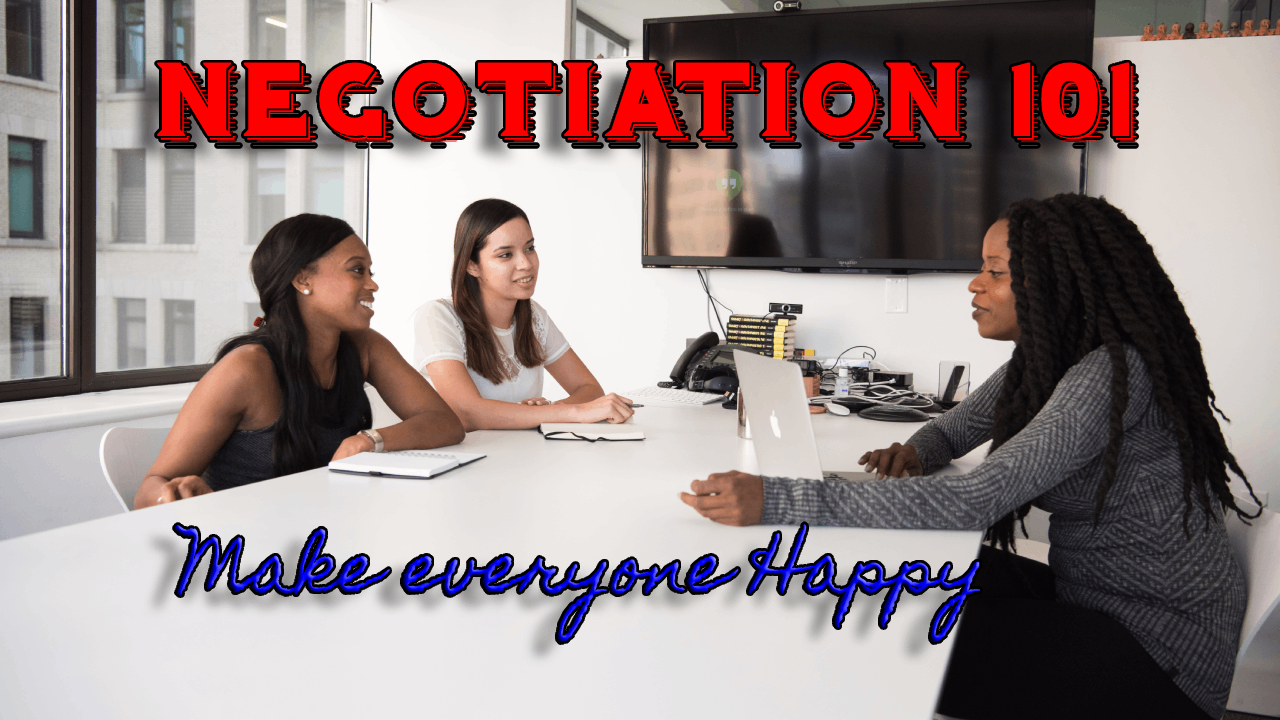Negotiation 101: Make everyone happy
Generate deals that make both parties more benefits.

A few weeks ago, I started doing a course on Coursera about negotiation. I finished the first two weeks and then decided to pause it to focus on other stuff for a while. Recently, I resumed that course and finished my first negotiation assignment. In this post, I describe the lessons I learned from the experience and the post negotiation assessment. Before you continue, please read my previous post (if you haven’t already), where I discuss some basic things about negotiation. Otherwise, you might face trouble following this post.
Link of the previous post: https://www.krooonal.com/negotiation-101-what-is-the-pie/
Problem statement
I will not bore you with the exact details of the problems. Instead, I will give a broad level description. Dr. Hasan had invented a new medicine and a company called “Zinc-it” was trying to buy the rights to produce the medicine. The medicine could be sold as a prescription medicine or as a dietary supplement. In the former case, Zinc-it would need to get approval from FDA.
Dr. Hasan had high hopes that his medicine would get FDA approval, but Zinc-it thought the probability of getting approval was low. Obviously, the potential benefits for selling the medicine as a prescription drug was much higher than selling it as a dietary supplement.
To negotiate the deal, the instructors gave us 5 options to start with. Each deal had two components: The upfront payment and the bonus in the event of FDA approval. Zinc-it will give that amount to Dr. Hasan. After the first 15 minutes, if we don’t shake hands, we were allowed to make a custom deal with different upfront and bonus amount. I played the role of Dr. Hasan in the negotiation. The other person played a role of Zinc-it representative. There was also a third optional role of a lawyer, who would get 5% of the upfront amount as commission. No one played that role.
The (bigger) pie
This part was simple. I was able to determine the pie and the shares of pie Dr. Hasan would get in each of the 5 given options. The interesting part was that the amount of pie was different for each option. Some options generated a larger pie and would benefit both Dr. Hasan and Zinc-it. This was because Dr. Hasan had different estimations about getting FDA approval. He thought it is more likely, so he valued the ‘bonus’ part of the deal more. So, every increment in the bonus value (along with a small reduction in the upfront value) generated a bigger pie.
Technically, this observation could lead to infinite pie, but there is a catch. If the bonus value is more than the generated profit, then zinc-it will have no reason to even apply for FDA approval. So, there was a practical limit.
In my negotiation, we agreed to a custom deal. Zinc-it will pay no upfront value. But the bonus amount was very large. So, it would generate a huge pie and both of us would get more out of that pie. As far as the numbers were concerned, I learned later on that we could have generated an even bigger pie if we would consider negative upfront values. That is Dr. Hasan would pay Zinc-it in the beginning. That would allow for even larger bonus and hence would reach closer to the practical limit.
Such options generate huge pies, but there is an issue. All the risk is taken by Dr. Hasan. Zinc-it doesn’t take any risk in such huge pie deals. Such things can be negotiated, and both parties can reach to a reasonable agreement closer to their risk tolerance. I went for huge pie because the question asked to disregard the risk factor. The main lesson here is that, sometimes, we can simply generate bigger benefits because the two parties have different views of the problem.
Going round in circles
This didn’t happen in my negotiation. But the instructors showed us one example where the Zinc-it representative was adamant on option D and option E of the given options. They just kept on discussing those two options. Turns out that their goal was to shake hands on Option C. So, they irritated the other party with option D and E. As soon as they offered to agree on option C, the other party gladly accepted it. This can happen in negotiation and one needs to be careful about that. The key here is to control the emotions.
Alternating removals
In some other sample negotiations, Zinc-it offered to remove option E if Dr. Hasan removes option A from the consideration. It looks logical and fair. But it is not. Alternating removals can be bad in many scenarios. One party can write down a large list of options that are just not acceptable to the other party and still land on them by this alternative removal process. So, if you are ever offered alternative removals, deny it.
Fighting fires with fire
In my negotiation, the other person was very logical. So, nothing crazy happened. But sometimes there are people who like to go for aggressive strategies. For example, “We will only consider option A and B. Otherwise there is no deal.” Fighting such ultimatums is never easy. On one hand, we can fight such fiery arguments with equal and opposite fiery arguments like, “Okay, in that case, we will only consider option D and E. Otherwise the deal is off.” Such strategy is not very useful. It will make the first party more angry, and we will likely not shake hands on any deal.
The better strategy is to try to put off the fire. One can suggest something like, “Look, I can also go for similar ultimatum, and we will not reach any deal. So let’s be more reasonable.” And then try to explore deals that can make both party happy. Trying to put off fire is much better than fighting fire with fire.
Beets vs. Broccoli
If we are negotiating between beets and broccoli, it is always better to find out what we want and then honestly tell it to the other party. If we like beets and the other party likes broccoli, we can make better deals by getting beets and offering broccoli to the other party.
In the Zinc-it case, Dr. Hasan liked bonus parts more than the upfront amount. Because both parties knew about it, they could generate better deals than the given options. Having a bigger pie should be our first goal anyway.
Conflicting interests
In this negotiation, the lawyer represented Dr. Hasan. But note that the lawyer only got commission on the upfront amount. So, there is a conflict of interest here. The lawyer would advise Dr. Hasan to not take a lot of risk and stick to small bonus amounts. This is eventually bad for Dr. Hasan. We should always consider the interests of the people who are working with us on any negotiation. In this case, Dr. Hasan can change the contract of the lawyer and offer them 5% of the total amount instead of just the upfront amount. Then the lawyer would be more interested in negotiating in a way that favors Dr. Hasan.
I hope you liked it. I will write about my next negotiation assignments in later posts!
My favorites
Video: Chinese magic mirrors
Quote: “What we fear doing most is usually what we most need to do.” ― Timothy Ferriss, The 4-Hour Workweek,
